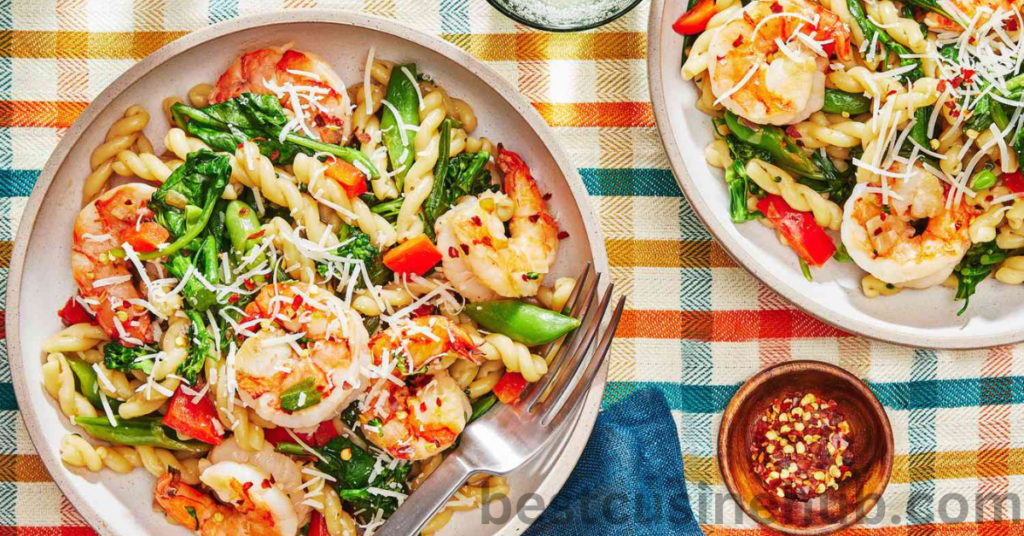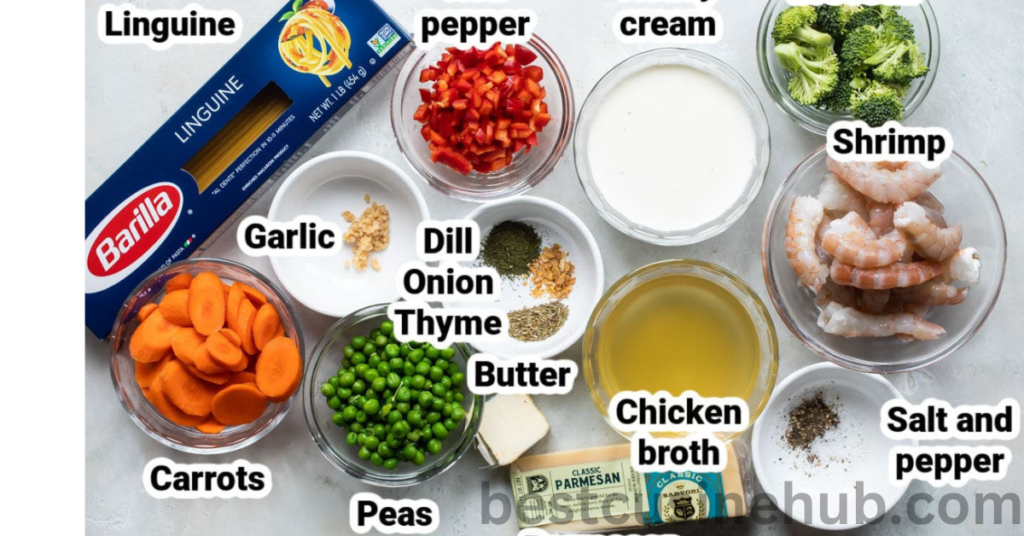Pasta Primavera is a vibrant, colorful dish that brings together the best of both worlds: Different flavors of pasta coupled with the healthy ingredient of vegetables that are in season at that time. Pasta Primavera is the type of dish that can be enjoyed every day with your family during wednesday night or a special dish served to guests at dinner party. This is a delicious, healthy dish that has just a hint of sophistication to it making it ideal for any occasion.
What is Pasta Primavera?
The name of this Italian dish translates into “Spring Pasta” and is perfect for a dish rich in season’s vegetables. The dish was developed in the early nineteen seventies at the original Le Cirque in New York by the owner, Sirio Maccioni, partly because of the fresh vegetablesavailable in spring. Although in its most rudimentary form, spaghetti and veggies are prepared to be cooked and served instantly, the preparation has progressively incorporated a lot of other elements and sauces to offer its patrons.
The original Pasta Primavera recipe includes pasta, sauteed vegetables, olive oil, garlic and Parmesan cheese. It is very light and crisp, a fantastic combination of the fresh vegetables and a delicious depth of cheese. The wonderful thing about this dish is that you have a great plain, base that you can use whatever vegetables you prefer and make it as diet-conscious or rich as you desire with your choice of pasta and sauce.

Why Pasta Primavera is So Popular
A Healthy, Nutritious Meal
Pasta Primavera is perfect for anyone who wants a healthy meal without having to sacrifice on the flavor. It is a very rich vegetable dish, so it caters for all your vitamin, mineral, and antioxidant needs. Such vegetables as bell peppers, zucchini, cherry tomatoes, spinach in a Pasta Primavera dish are just but a few. Not only do these colorful veggies pack nutrition but the dish looks visually appealing too.
This dish can be made even healthier by using whole wheat or gluten-free pasta because it means you’ll have more fiber and nutrients. It is also very customizable for different diets, for example, vegan or dairy free if you substitute the cheese or use dairy-free cheese.
Versatile and Customizable
What makes Pasta Primavera very special is the fact that you can always prepare it in a manner that you want to and with the vegetables that you have on hand. Love mushrooms? Put them in. Like asparagus more than zucchini. No problem! That is why I love this dish because the key ingredients are very flexible that can be adjusted depending on what. What is amazing about this dish is that you can easily prepare it with whatever vegetables you find available or with whatever veggies you have at home.
If you are interested in a more protein dense dish, the option is to add grilled chicken, shrimp or even tofu to the dish. There are as many variations as you want to imagine; thus, it can be labelled as meat eaters’ and veggies’ delight.
Quick and Easy to Make
It is however important to note that Pasta Primavera has one of the easiest preparations among all pasta dishes. Preparation of this dish cannot take more than 30 minutes and is ideal for preparation during the weekdays or any special day that has been considered to be way too busy. The pasta takes little time to cook, and the vegetables require very little preparation by being sautéed in olive oil for a couple of minutes. In addition, the vegetables are just cooked in one pan, and the pasta is cooked in one pot, so easy to clean up afterward!
Ingredients You’ll Need for Pasta Primavera
It’s better to use fresh seasonal vegetables and quality pasta and cheese not packaged processed ones. Here’s what you’ll need for a basic version of the dish:
Pasta:
Haddock can be substituted with any type of pasta, however, the most used are spaghetti or penne. Instead of the processed pasta, try to buy whole wheat or gluten-free pasta.
Vegetables:
- Red, yellow, or orange bell peppers.
- Zucchini
- Cherry tomatoes
- Asparagus
- Broccoli
- Carrots
- Fresh spinach or arugula
Flavorings:
- Garlic (fresh is best)
- Olive oil
- Any fresh or dried green herbs; basil, thyme, oregano etc.
- Shredded Toppings: Grated parmesan cheese (or decoded, vegan cheese)
Additional Optional Ingredients:
- Protein can be grilling chicken or shrimps
- Organic lemon juice for brightness for freshness
- Another ingredient which should be added is fresh herbs for garnishing the food such as basil or parsley.
How to Make Pasta Primavera
Step 1: Cook the Pasta
To begin with, you can boil your pasta in a large saucepan of boiling, salted water in proportion to the package’s instructions. After that, turn off the heat and add the pasta; however, be sure to reserve a little pasta water – it can be added to the sauce to better thicken it and add a couple of other tastes.
Step 2: Sauté the Vegetables
At the same time, heat olive oil in a great pan over medium heat to prepare the sauce. Put garlic and stir for 1-2 minutes or until the garlic turns brown. Next, put in your chopped vegetables, and it will be more appropriate to put vegetables like carrots and bell peppers first, as they take a longer time to soften. Saute for 5-7 minutes stirring occasionally until the vegetables are still bright but slightly soft.
Step 3: Combine Pasta and Vegetables
However, when preparing your vegetables, once they are done, you plunge the cooked pasta into the skillet containing the vegetables. Just combine everything, if it is too dry, add a few splashes of pasta water, which was saved earlier. Slo populace Parmesan cheese (if using) and fresh herbs, like basil or parsley. For a measure of brightness use a few drops of lemon juice on the top just before consuming the dish.
Step 4: Serve and Enjoy
That’s all about it! Your Pasta Primavera is now ready to be served! In order to serve the dish, plate the dish, and if you would like to add some more cheese or fresh herbs on top, go for it. You could also, finish the dish with some more olive oil or sprinkle black pepper which has just been ground for that added spice.
Variations of Pasta Primavera
As we mentioned before, Pasta Primavera is very flexible when it comes to options and variations, so you should try whatever you want or come up with. Here are a few ideas:
- Add Protein: To make it more of a main dish, corn the chicken, shrimp, or even bacon and chop it up to put into the pot. These proteins stand well when combined with fresh vegetables.
- Make It Creamy: For a creamier dish you would prefer, mix Pasta Primavera with light creamy sauce or just sprinkle Alfredo sauce.
- Go Vegan: Do not use Parmesan cheese, instead use yeast extract with a nutty flavor that is rich in nutrients. You can also include roasted chickpeas which will help you gain additional protein.

Why You’ll Love Pasta Primavera
Since our Pasta Primavera lacks cream and cheese, it is not only easy to prepare but also healthy and scrumptious. What you get is fresh vegetables, and tasty pasta, and do not overcomplicate the ingredients because they are not necessary. It’s not too delicate for a spring dinner and simultaneously hearty enough for a family dinner.
Pasta Primavera is perfect for those who have never tried cooking before or for those who cook a lot to find something new. These days it is possible to never get bored of it as there are millions of options and you can cook it the way you like, and that’s why this colorful dish is still popular among housewives and gourmands.
Thus, the next time you are hungry for something light and tasty, it is high time to try Pasta Primavera!
What vegetables are best for Pasta Primavera?
The best vegetables for Pasta Primavera include bell peppers, zucchini, cherry tomatoes, asparagus, broccoli, and spinach. You can mix and match based on what’s in season or your personal preference.
Can I make Pasta Primavera ahead of time?
Yes, you can make Pasta Primavera ahead of time. Store the pasta and vegetables separately in the fridge and combine them when ready to serve. Reheat gently to avoid overcooking the vegetables.
Is Pasta Primavera healthy?
Yes, Pasta Primavera is a healthy dish. It’s packed with vegetables, providing fiber and essential nutrients, and can be made lighter with whole wheat or gluten-free pasta. You can also control the amount of cheese and oil to suit your dietary needs.

